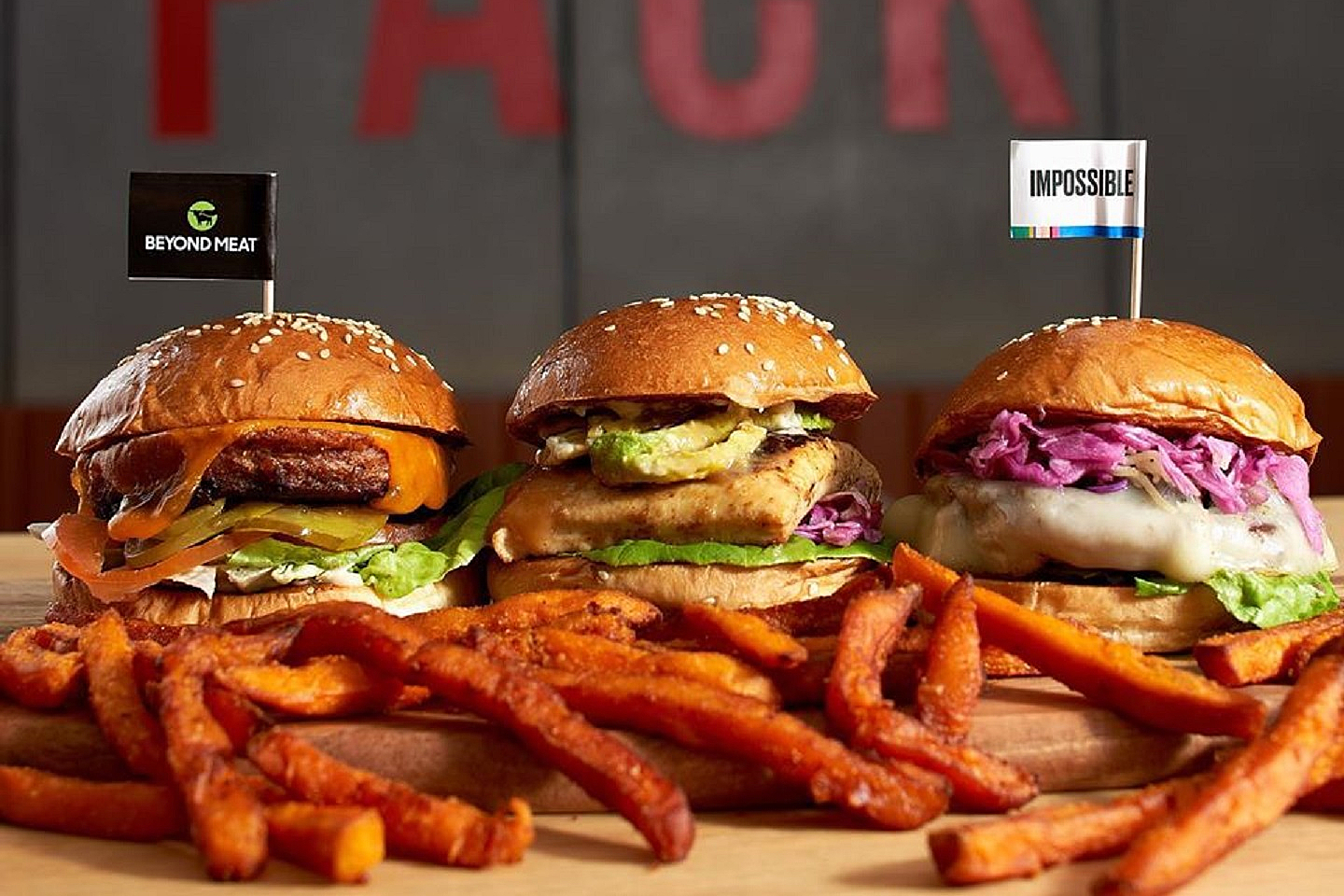
Wolf Burgers serves meat substitutes from both Beyond Meat and Impossible Foods (Photo: Wolf Burgers)
Versions of mock meat have been in the market for years, catering for the vegetarian segment of the population. Recently, interest in mock meat has surged, with an increasing proportion of people, especially millennials, professing interest in vegetarian diets owing to reasons of health, environmental concerns and animal welfare, on top of the traditional religion and culture.
Advances in food technology have unparalleled levels of mimicry of real meat. In May, the shares of Beyond Meat, a producer of plant-based meats, traded 700% above its initial public offering price, attracting widespread attention from the food industry. Titans such as Nestlé and Tyson Foods have begun to produce their own plant-based meat products.
Beyond Meat produces a range of meat substitutes, including burger patties, pork sausage and beef, which are available in some countries internationally. In the US, chains such as Carl’s Jr, Hardee’s, TGIF and Dunkin’ Donuts and a host of other restaurants feature its products. Kentucky Fried Chicken tested Beyond Fried Chicken at its restaurant in Atlanta, and sold out in just five hours.
carls_jr_beyond_famous_star_1.jpg
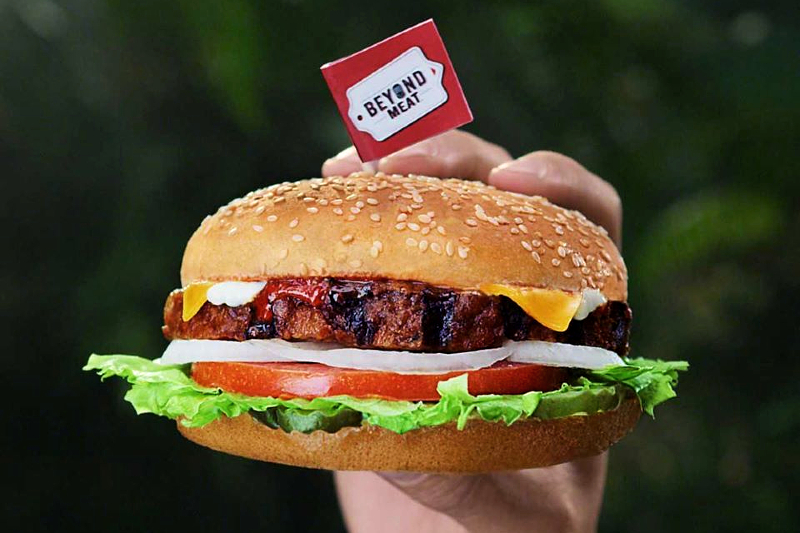
The mission of Beyond Meat, as explained on its website, is to improve human health, positively impact climate change, address global resource constraints and improve animal welfare. The company commissioned the University of Michigan to conduct a Life Cycle Analysis, which reports that its burger consumes 99% less water, occupies 93% less land, emits 90% less greenhouse gases and consumes 46% less energy to produce than the meat equivalent, not to mention not killing any cows in the process.
Beyond Meat’s products use protein from peas, mung beans and rice, and do not contain soy, gluten or genetically modified organisms. The “blood” oozing from Beyond Meat’s products comes from beet juice, which also causes the uncooked products to appear pink, like real meat.
On the nutritional and health fronts, there has been enough controversy to give anyone a headache, if not a nosebleed. Nutritionists argue that processed foods are not necessarily healthier for you than real meat.
wolf_beyond_meat.jpg
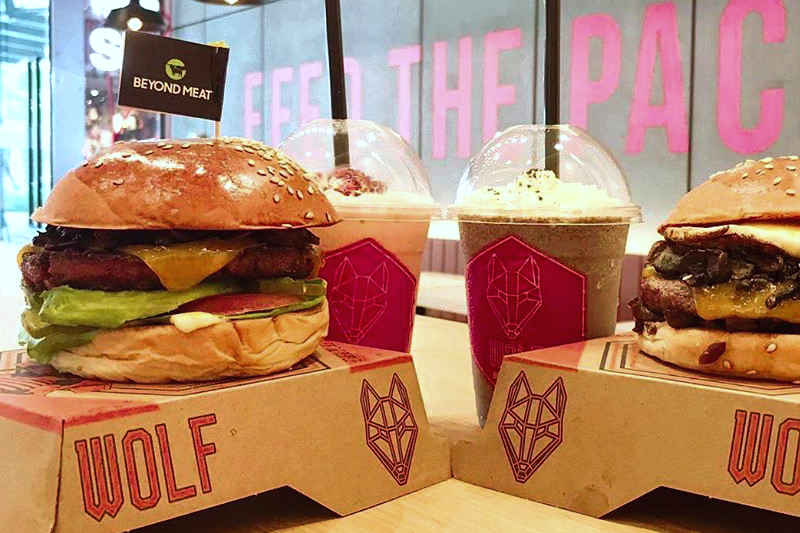
But when it comes down to it, how does it taste? Beyond Meat’s products are available in Singapore — served in restaurants and in uncooked form from online orders and some supermarkets.
Wolf Burgers, a fast-food chain with outlets in Singapore and Japan, uses Beyond Meat patties in its Future Burger (S$16.95), which sells at a premium over its regular beef burgers. The burger I had — complete with melted cheese, lettuce, tomato and pickles — looked indistinguishable from any other. Appearance-wise, the patty, nicely browned with crispy edges, had an uncanny resemblance to meat. Inside, it had a pink core, with a granular texture shot and flecks of white (simulated fat).
It was very good — juicy and tasty, with the richness of a greasy, old-fashioned burger. The patty was a surprise. If you weren’t paying attention, it could easily have passed as real meat. Texture-wise, it was convincing — chewy, with the crumbly, juicy nature of meat. It was the combination of other ingredients, and their preparation on the same pan like any other burger, that made the sandwich compelling and gave it a satisfying completeness.
mezza_9.jpg
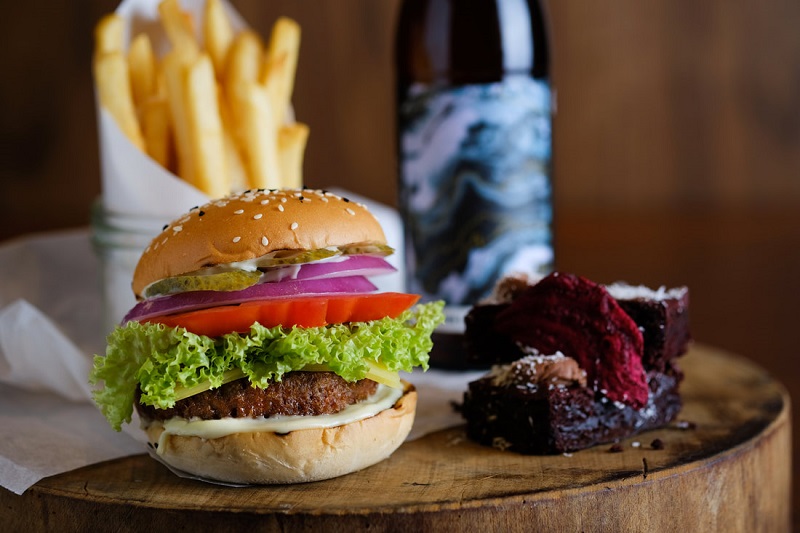
Next up was the Grand Hyatt Singapore, whose swanky Mezza9 serves a vegan version called Beyond Burger (S$26). Mezza9 had the requisite mood lighting, solicitous service and the ambience of a five-star restaurant. The burger was a dairy-free brioche bun filled with a Beyond Meat patty, dairy-free Cheddar cheese, lettuce, onion, pickles, mustard and dairy-free mayonnaise.
The burger experience was a let-down. The cheese was a deep-yellow plastic-looking round disc that had the brittleness of plastic. The bun was unappealing and dry. The burger patty was the saving grace, with its lush, granular texture and rich mouthfeel.
We were given a specially made Asian version, which had watercress and caramelised onions, to make up for a reservation snafu. Even with the unrepentant fake cheese disc, it was a better burger — the ingredients complemented the patty to much better effect.
The question begs to be asked: How does Beyond Meat’s burger patty compare to the Impossible Burger? Impossible Foods has also been a poster child for plant-based meat. (Read our review of the Impossible Burger here)
swensens_rendang_impossible_burger.jpg
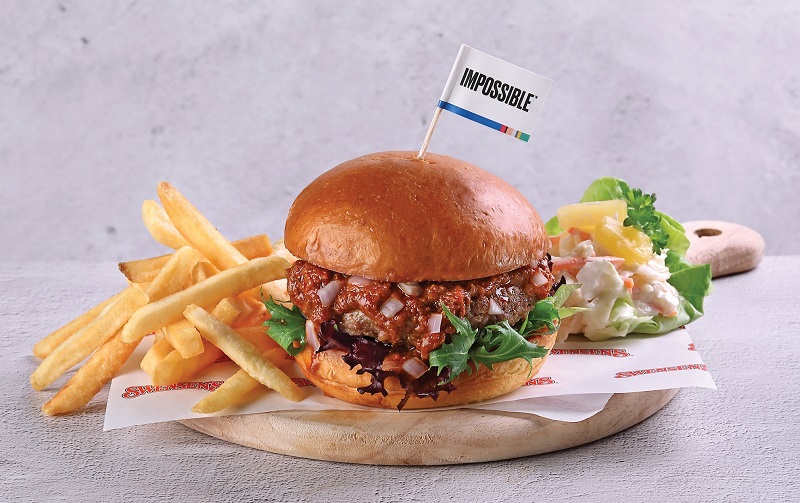
I took advantage of Swensen’s promotional offer of a Rendang Impossible Burger (S$15.90), which came with a mesclun salad, chopped onions and Rendang sauce. From the first bite, it was evident that awesome as the Beyond Meat burger is, the Impossible Burger is even more so. It had heft, a heartiness and completeness that made it a better burger in closeness to meat. Texturally, the two were both excellent in mimicking meat but the Impossible Burger was more flavourful, with that slightly bloody taste of real meat.
This is not to detract from Beyond Meat’s burger. It beggars belief that it is plant-based, non-genetically modified (compared to the Impossible Burger) in its resemblance to meat, appearance and taste-wise. There are differences between Beyond Meat and Impossible Burger — in composition, availability, pricing, nutrition, and so on, which may sway consumers.
For those who like meat but have reservations about eating it, having a juicy, delicious and guilt-free burger has never been easier.
This article first appeared on Dec 9, 2019 in The Edge Malaysia.


